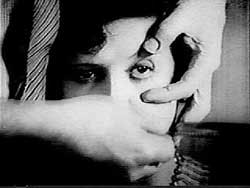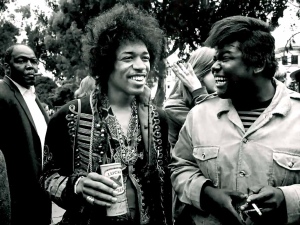
One of the more interesting things a micro-community can do within a social network is come to terms and through their gestures establish a value for something. One of the best descriptions I’ve read of this process was by art critic Kenneth Baker, specifically in his review of Dale Chihuly’s exhibition at the DeYoung Museum in San Francisco. While Baker is discussing his reaction to the show and the role of his review in the larger swirl of opinions that make up the cultural value of the work, his words equally apply to the social and political objects in our midst.
Baker’s original review of the Chihuly show was intensely negative; he even took the museum to task for mounting a show that was more ‘craft’ than ‘art.’ Chihuly is a popular glass artist and Baker’s review incited a torrent of disagreement. I found Baker’s defense of his review to be some of his best writing. Here’s how Baker set the context:
In today’s culture, people need not merely critics to tell them what art is, but also artists, curators, art historians, art dealers, collectors – and the viewers’ own education and sensibility.
In the consensus as to the art status of a piece or a body of work, each such participant has something to contribute, and each type of contribution has to be valued differently.
The interesting bit here is that no perspective is authoritative, but each view has a unique value in the equation of cultural worth. Baker’s assessment is based on the network of connections to canonical work that forms our cultural mesh:
Hence, my practice of comparing one artist’s works with those made by others. Art is made of connections – connections available to any informed observer – not just of materials and good intentions.
The several readers who faulted me for comparing Chihuly‘s work with his more serious contemporaries’ uses of glass misunderstood my purpose: I was looking for redeeming linkages between his work and art – sculpture – of canonical stature, and could find none. No one who wrote to me in his defense mentioned any either.
Most of us would prefer to believe that “art” is a quality inherent in or infused in certain things, but the history of modern art, and of its enveloping social reality, has left us in a much more complex and ambiguous position. Those who refuse to acknowledge this are the very dupes that the culture industry banks on.
Baker defines the role of the critic in our modern attention markets:
I took a caustic tone because I believe, more or less as the poet John Ciardi put it, that we are what we do with our attention.
Every newspaper critic argues that readers ought to spend their attention in some ways and not others. A critic, no matter what his field, must be an expert in the uses of attention and their rewards – in terms of pleasure, expanded insight, challenges to habit and prejudice and much more.
Today art critics also find themselves having to push back against the tendency of many museums to market their programming as entertainment, which inevitably tends toward escapist uses of attention. “Chihuly at the de Young” is a prime example of this sorry cultural drift.

And of course, whenever the value of art becomes the topic of conversation we have to discuss the paintings of Ad Reinhardt, or Duchamp’s repurposing of a urinal as a sculpture entitled Fountain:
Marcel Duchamp’s notorious “Fountain” (1917), a mass-produced plumbing fixture turned on its back, signed with a pseudonym and presented as sculpture, proclaimed a fissure between the concept of art and its unambiguous embodiment in objects.
If Duchamp’s gesture had found no resonance in the wider situation of culture, his prank would have been forgotten long ago. But the peculiar cultural condition that he diagnosed persists: We still seldom see thought and thing brought together seamlessly outside the realm of mechanical engineering. Artists’ struggles with this problem continue to produce bizarre and fantastically various results, some provocative, illuminating and pleasing, most not.
Political philosopher Hannah Arendt defined artworks as “thought things,” that is, things that materialize thought, things to be thought about and, in rare cases, things to help us think.
As we consider the “thought things” that are collaboratively filtered through our social media networks, often we imagine a democratic process where each participant in the network has an equal vote. Presumably the top vote getter is the thing that deserves and wins our attention. Baker imagines an attention market where the votes of contributors are given different values. We accomplish this to some extent by using the Friend, Follow and Track tools to create a directed social graph that filters the firehose of information pouring off the Network with each tick of the clock. These tools are coarse filters when compared with the finely-tuned mesh of the art markets. Baker’s vision of value discovery in our attention markets reveals a possible future state of our social media toolset.




